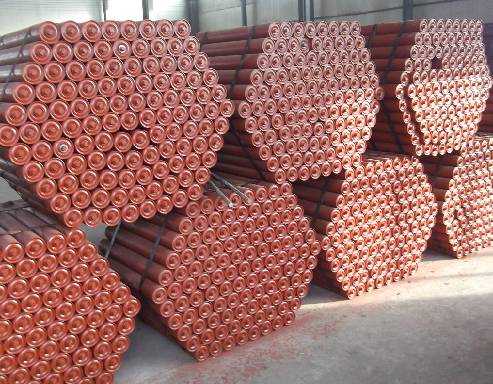 Afrikaans
Afrikaans  Albanian
Albanian  Amharic
Amharic  Arabic
Arabic  Armenian
Armenian  Azerbaijani
Azerbaijani  Basque
Basque  Belarusian
Belarusian  Bengali
Bengali  Bosnian
Bosnian  Bulgarian
Bulgarian  Catalan
Catalan  Cebuano
Cebuano  Corsican
Corsican  Croatian
Croatian  Czech
Czech  Danish
Danish  Dutch
Dutch  English
English  Esperanto
Esperanto  Estonian
Estonian  Finnish
Finnish  French
French  Frisian
Frisian  Galician
Galician  Georgian
Georgian  German
German  Greek
Greek  Gujarati
Gujarati  Haitian Creole
Haitian Creole  hausa
hausa  hawaiian
hawaiian  Hebrew
Hebrew  Hindi
Hindi  Miao
Miao  Hungarian
Hungarian  Icelandic
Icelandic  igbo
igbo  Indonesian
Indonesian  irish
irish  Italian
Italian  Japanese
Japanese  Javanese
Javanese  Kannada
Kannada  kazakh
kazakh  Khmer
Khmer  Rwandese
Rwandese  Korean
Korean  Kurdish
Kurdish  Kyrgyz
Kyrgyz  Lao
Lao  Latin
Latin  Latvian
Latvian  Lithuanian
Lithuanian  Luxembourgish
Luxembourgish  Macedonian
Macedonian  Malgashi
Malgashi  Malay
Malay  Malayalam
Malayalam  Maltese
Maltese  Maori
Maori  Marathi
Marathi  Mongolian
Mongolian  Myanmar
Myanmar  Nepali
Nepali  Norwegian
Norwegian  Norwegian
Norwegian  Occitan
Occitan  Pashto
Pashto  Persian
Persian  Polish
Polish  Portuguese
Portuguese  Punjabi
Punjabi  Romanian
Romanian  Russian
Russian  Samoan
Samoan  Scottish Gaelic
Scottish Gaelic  Serbian
Serbian  Sesotho
Sesotho  Shona
Shona  Sindhi
Sindhi  Sinhala
Sinhala  Slovak
Slovak  Slovenian
Slovenian  Somali
Somali  Spanish
Spanish  Sundanese
Sundanese  Swahili
Swahili  Swedish
Swedish  Tagalog
Tagalog  Tajik
Tajik  Tamil
Tamil  Tatar
Tatar  Telugu
Telugu  Thai
Thai  Turkish
Turkish  Turkmen
Turkmen  Ukrainian
Ukrainian  Urdu
Urdu  Uighur
Uighur  Uzbek
Uzbek  Vietnamese
Vietnamese  Welsh
Welsh  Bantu
Bantu  Yiddish
Yiddish  Yoruba
Yoruba  Zulu
Zulu idler roller
The Importance of Idler Rollers in Conveyor Systems
Idler rollers play a crucial role in the effectiveness and efficiency of conveyor systems. These simple yet essential components serve multiple functions that are vital to the smooth operation of material handling processes in various industries. Understanding the importance of idler rollers, their types, and their maintenance can help businesses optimize their production lines and reduce downtime.
At its core, an idler roller is a cylinder mounted on a frame that supports the conveyor belt. Unlike drive rollers, which are powered to move the belt forward, idler rollers provide support and stability, ensuring that the belt remains aligned and travels smoothly. They are typically positioned at intervals along the conveyor system to facilitate the movement of materials while reducing friction and wear on the belt.
One of the primary functions of idler rollers is to help maintain proper tension on the conveyor belt. Proper tension is crucial as it prevents slippage and ensures that the belt operates at optimal efficiency. Idler rollers help distribute the weight of the materials being transported evenly across the belt, reducing the risk of sagging or excessive wear.
Idler rollers also play a significant role in guiding the conveyor belt. They help keep the belt aligned within the framework of the system, preventing it from drifting off course. This alignment is crucial for maintaining the integrity of the material transfer process and avoiding costly disruptions or accidents. Misaligned conveyor belts can lead to significant material loss or damage to both the belt and the machinery.
idler roller

There are several types of idler rollers, each designed for specific applications and environments. The most common types include smooth idlers, grooved idlers, and impact idlers. Smooth idlers are used for standard applications and provide basic support for the conveyor belt. Grooved idlers are designed for applications involving loose materials, as the grooves help grip the belt and prevent slipping. Impact idlers are used in areas where heavy materials are loaded onto the conveyor system, providing additional support and cushioning to absorb shock and minimize damage.
Despite their simplicity, idler rollers require regular maintenance to function effectively. Over time, dirt, debris, and moisture can accumulate, leading to corrosion and decreased performance. Regular inspections should be conducted to check for signs of wear, misalignment, or damage. Lubricating the bearings and ensuring that the rollers are free of obstructions will help prolong their lifespan and keep the conveyor system running smoothly.
Furthermore, businesses should consider the materials used in idler roller construction. Depending on the specific industry and application, idler rollers can be made from various materials, including steel, aluminum, and plastic. Each material offers different benefits, such as resistance to corrosion, weight reduction, and cost-effectiveness. Choosing the right material for idler rollers can significantly impact the longevity and performance of the entire conveyor system.
In conclusion, idler rollers are integral components of conveyor systems that contribute significantly to their efficiency and reliability. By maintaining proper tension, ensuring alignment, and supporting the belt's movement, these rollers enable smooth operations in various industries, from manufacturing to logistics. Regular maintenance and appropriate material selection can enhance their performance, leading to increased productivity and reduced operational costs. Therefore, understanding the role of idler rollers and investing in their upkeep should be a priority for any business relying on conveyor systems for material handling solutions.
-
Trusted Conveyor Solutions from Leading Conveyor Idler Roller ManufacturersNewsJun.27,2025
-
Reliable Return Idler Solutions for Efficient Belt Conveyor SystemsNewsJun.27,2025
-
Precision Conveyor Accessories for Streamlined Material HandlingNewsJun.27,2025
-
High-Quality Belt Conveyor Idler Solutions for Efficient Material HandlingNewsJun.27,2025
-
High-Performance Belt Conveyor Pulleys for Reliable Material HandlingNewsJun.27,2025
-
Enhancing Material Handling EfficiencyNewsJun.27,2025





























